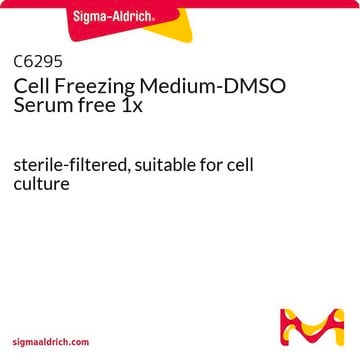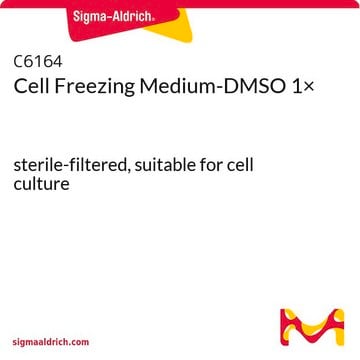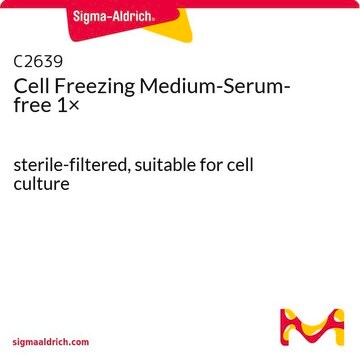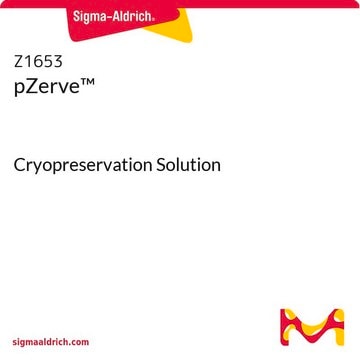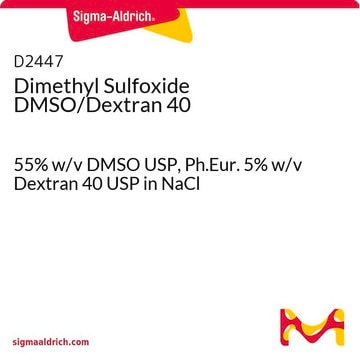C9249
CryoSOfree™ DMSO-free Cryopreservation Medium
Synonym(s):
cell freezing medium
About This Item
Recommended Products
form
liquid
Quality Level
greener alternative product characteristics
Designing Safer Chemicals
Learn more about the Principles of Green Chemistry.
sustainability
Greener Alternative Product
technique(s)
cell culture | mammalian: suitable
cryopreservation: suitable
greener alternative category
, Aligned
shipped in
wet ice
storage temp.
2-8°C
General description
Application
Features and Benefits
- Preserves pluripotency of stem cells
- Low cytotoxicity
- Chemically defined, serum free, protein free
- Ready to use
The following cell lines have been recovered at ≥90% following cryopreservation with CryoSOfree:
L929, KB, MC3T3, B16F1, Colon26, CaCO2, HT1080, MG63
Preparation Note
Legal Information
Signal Word
Warning
Hazard Statements
Precautionary Statements
Hazard Classifications
Eye Irrit. 2 - Met. Corr. 1 - Skin Irrit. 2
Storage Class Code
8A - Combustible corrosive hazardous materials
WGK
WGK 3
Flash Point(F)
Not applicable
Flash Point(C)
Not applicable
Certificates of Analysis (COA)
Search for Certificates of Analysis (COA) by entering the products Lot/Batch Number. Lot and Batch Numbers can be found on a product’s label following the words ‘Lot’ or ‘Batch’.
Already Own This Product?
Find documentation for the products that you have recently purchased in the Document Library.
Customers Also Viewed
Articles
Discover answers to your frequently asked questions about animal component-free, xenobiotic-free, and chemically defined media and reagents for cell culture.
Discover answers to your frequently asked questions about animal component-free, xenobiotic-free, and chemically defined media and reagents for cell culture.
Discover answers to your frequently asked questions about animal component-free, xenobiotic-free, and chemically defined media and reagents for cell culture.
Discover answers to your frequently asked questions about animal component-free, xenobiotic-free, and chemically defined media and reagents for cell culture.
Related Content
Introducing a new cell therapy demands optimal performance in upstream and downstream processing, process development, testing, and manufacturing. World-class products and partners are critical to success, speeding advancement of therapeutics that are effective, safe, and affordable.
Introducing a new cell therapy demands optimal performance in upstream and downstream processing, process development, testing, and manufacturing. World-class products and partners are critical to success, speeding advancement of therapeutics that are effective, safe, and affordable.
Introducing a new cell therapy demands optimal performance in upstream and downstream processing, process development, testing, and manufacturing. World-class products and partners are critical to success, speeding advancement of therapeutics that are effective, safe, and affordable.
Introducing a new cell therapy demands optimal performance in upstream and downstream processing, process development, testing, and manufacturing. World-class products and partners are critical to success, speeding advancement of therapeutics that are effective, safe, and affordable.
Our team of scientists has experience in all areas of research including Life Science, Material Science, Chemical Synthesis, Chromatography, Analytical and many others.
Contact Technical Service
